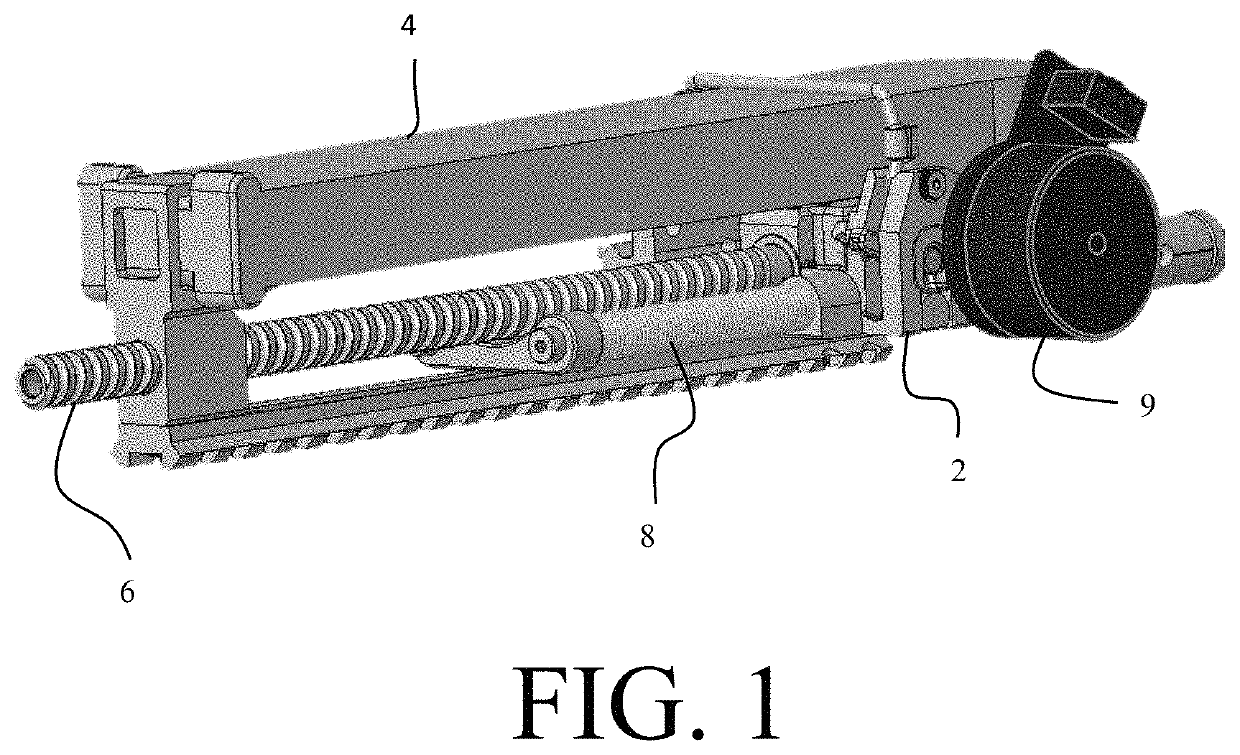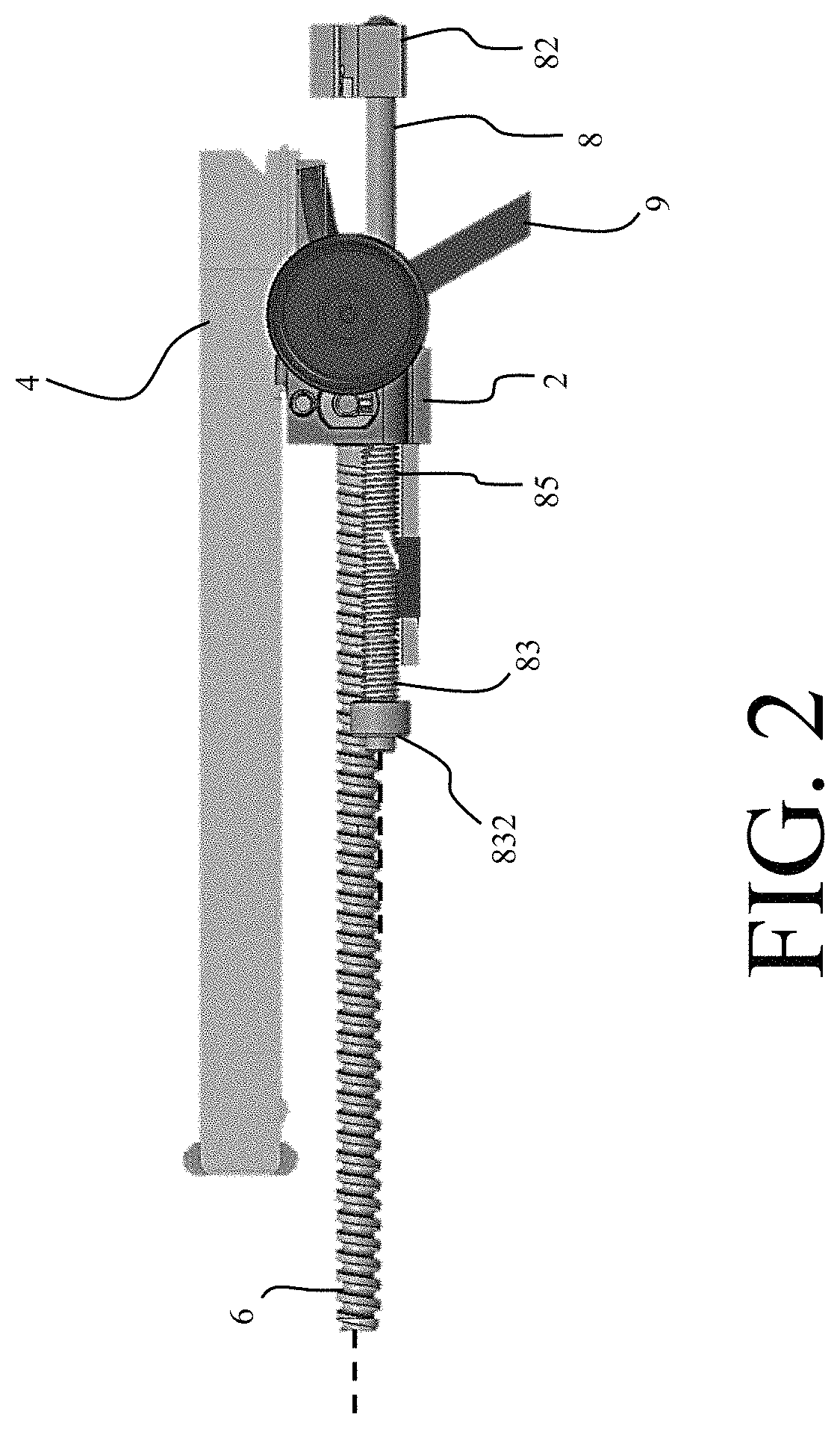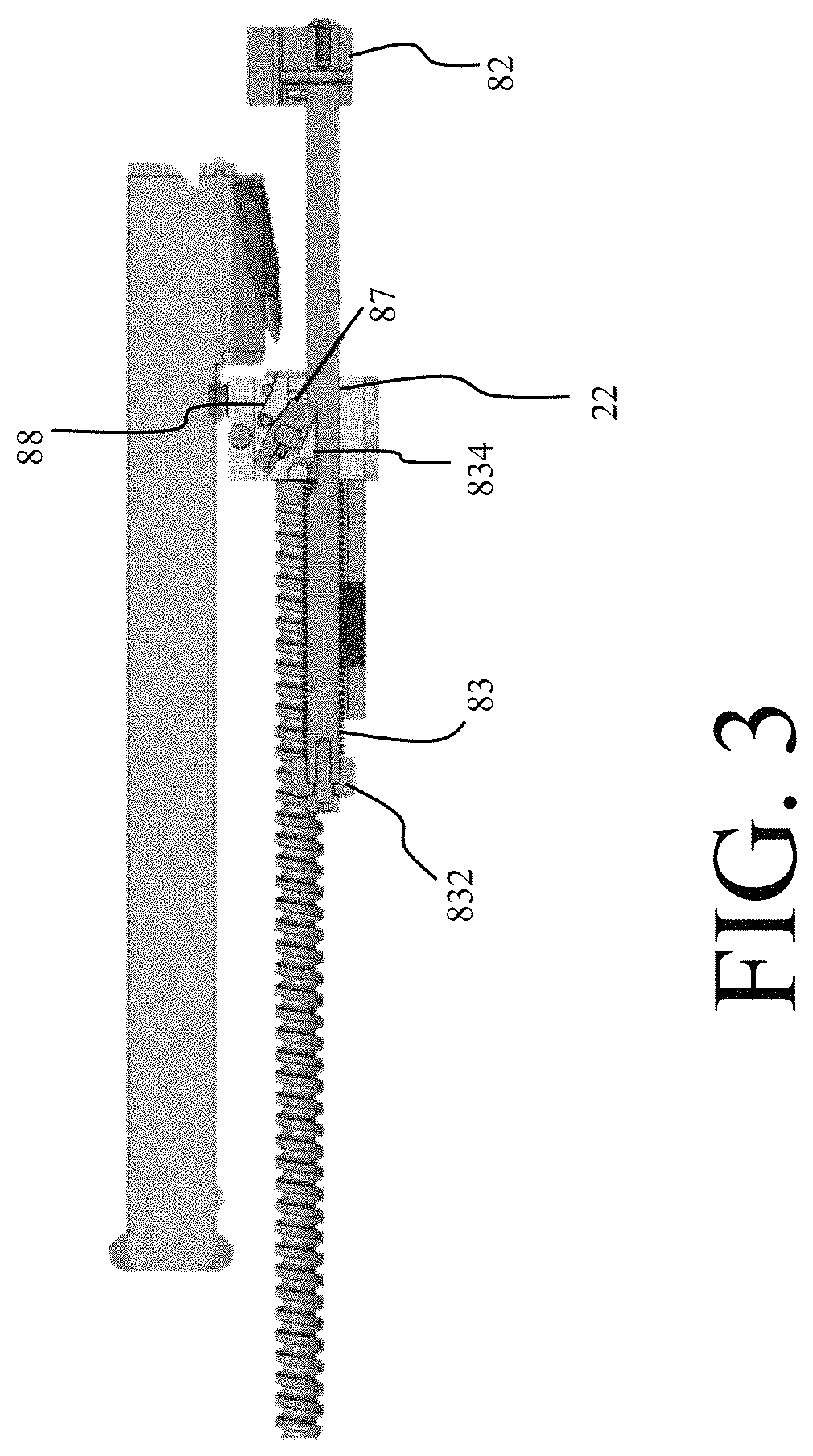Full power blow-back gun for lightweight application
- Summary
- Abstract
- Description
- Claims
- Application Information
AI Technical Summary
Benefits of technology
Problems solved by technology
Method used
Image
Examples
Embodiment Construction
[0023]A weapon system for use on a lightweight unmanned aerial vehicle (UAV) employs blowback operation to provide lightweight and reliable lethality. The weapon system enables firing of high power centerfire rifle cartridges from the lightweight UAV without the need for an overly massive bolt. The weapon system achieves this through several design features which will be described in more detail below. Additionally, the weapon system is configured such that it will not fire due to a crash landing.
[0024]The weapon system is particularly suited for use on a lightweight UAV. In this context, lightweight UAV denotes a UAV which is soldier-portable. For example, the weapon system is particularly suited for Group 1 and Group 2 UAVs as classified by the United States Department of Defense. Group 1 UAVs are classified as UAVs which weigh between 0 and 20 pounds and have an operating altitude of less than 1200 feet above ground level (AGL). Group 2 UAVs are generally classified as being betw...
PUM
 Login to View More
Login to View More Abstract
Description
Claims
Application Information
 Login to View More
Login to View More - R&D
- Intellectual Property
- Life Sciences
- Materials
- Tech Scout
- Unparalleled Data Quality
- Higher Quality Content
- 60% Fewer Hallucinations
Browse by: Latest US Patents, China's latest patents, Technical Efficacy Thesaurus, Application Domain, Technology Topic, Popular Technical Reports.
© 2025 PatSnap. All rights reserved.Legal|Privacy policy|Modern Slavery Act Transparency Statement|Sitemap|About US| Contact US: help@patsnap.com



